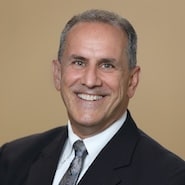The cloud can be a magical place of value and optimization – but only yields its secrets to those with the expertise to master it. The problem is that many health systems moved in too quickly or without that expertise, leaving IT executives in the position of having to go back and retro fit important […]
healthsystemCIO.com
Enabling Asset Tracking & Facilitating Clinical Workflows with Person-Centered RTLS
Healthcare is dynamic, some might even say chaotic. Anyone who has spent five minutes in a busy hospital will attest to the fact that caregivers, patients and equipment move through the hallways, and in and out of rooms, at a dizzying pace. And with all that movement, it’s no surprise those same caregivers are often slowed down when they can’t find someone or something they need. In response to this dynamic, some health systems have embraced RTLS to reduce the time lost in searching and to add more context to their data for better insight into clinical workflows and operational outcomes. In this important webinar, we’ll speak to leaders about their RTLS journey, explore uses cases where it’s made a difference today and is positioned to do so tomorrow, review best practice for implementation and optimization, and cover how the technology has advanced over the past few years.
HIMSS Conference Preview: Keith Duemling on His Medical Device Security Session, How IT Executives Can Make Most of Shows, & Some Dont’s for Sales Folks
As the old expression goes, time is money. For executives like Keith Duemling, Senior Director of Cybersecurity Technology Protection, Cleveland Clinic, time is also about focus. That’s why he’s laser focused while at shows like HIMSS on finding ways to better protect the clinic’s patients and their data. To that end, exhibit floor games that […]
HIMSS Conference Preview: Mike Mistretta on Reimagining the Outpatient Experience; The Importance of Including IT from the Beginning; and Some Common Sales Tactics to Avoid
When IT folks are handed just about any situation, they find solutions – it’s in the DNA. So it’s not surprising that when Mike Mistretta, SVP & CIO at VHC Health System, was handed finished plans for a new outpatient building, he and his team went to work outfitting it with the latest and greatest […]
Strategies for Moving Towards a Uniform Digital Front Door Experience
Though health systems talk about what they want their “digital front door” to look like, the reality is they usually have many; none of which provide the same experience. That’s because often their individual hospitals, departments, service lines and physician practices — especially those recently acquired — have their own digital front doors, if they have one at all. For some, this may simply consist of a web site; for others, it may be a dedicated portal; while for a rare few, it can be a specialized mobile-native app with lots of functionality. The problem lies in the uneven patient experience this provides within a health system when someone who has interacted with a high-touch area later interacts with one at the other end of the spectrum. In this timely webinar, we’ll hear from leaders who are working hard to reduce the disparate avenues of entry into their organizations so patients have a more consistent and compelling digital front door experience.
Q&A with Children’s Hospital of Philadelphia CISO & Associate CIO Monique St. John: Security Actually Empowers Innovation
It’s the old preconception that’s kept security out of the equation for far too long – if cyber gets involved, the whole project is dead, or at least not going anywhere fast. Luckily that dynamic is falling by the wayside, as business leaders have to come to realize that not including security means taking on […]
Live @ Vive Q&A with Greg Garcia, Executive Director, Cyber Security, Health Sector Coordinating Council: Guidance Moving Towards Simplicity, Clarity
Healthcare is complicated. So it’s not surprising that healthcare cybersecurity is just as complex. But what shouldn’t be complicated is the guidance health systems are given to deal with threats. In the past, a number of well-meaning entitles – from government to private to hybrids of the two – have put out roadmaps, frameworks and […]
Live @ Vive Partner Perspective Q&A with Ryan Witt, VP, Industry Solutions, Healthcare, Proofpoint: Healthcare is Blessed to Have 405(d)
Healthcare is abuzz with talk of artificial intelligence. And when it comes to cybersecurity, that buzz both has to do with how the bad guys are going to use it, and how the good guys can apply it to defense. But Ryan Witt, VP, Industry Solutions, Healthcare, Proofpoint, warns that today, the time of small- […]
Q&A with AltaMed Health Services CIO Raymond Lowe: “Everybody Talks about Patient-centered Care, But We Live It.”
“The power of any type of EHR is how it’s being utilized, not only by clinicians but also by your patient population,” said Raymond Lowe, SVP and CIO at AltaMed Health Services. In this interview, he talked about how his team’s recent Epic achievement, how they’re leveraging data to help enable “culturally competent care,” and why it’s not always wise to chase perfection.
Live @ Vive Partner Perspective Q&A with Guillaume de Zwirek, CEO, Artera: Health Systems Must Bring Governance to Patient Outreach
In an effort to better engage with patients, many health systems have gotten themselves into a pickle by going overboard. Today, with almost every department running its own patient engagement efforts, those at the end of all that attention are feeling overwhelmed. But there’s a better way, and it starts with governance, according to Guillaume de Zwirek, CEO, Artera.









